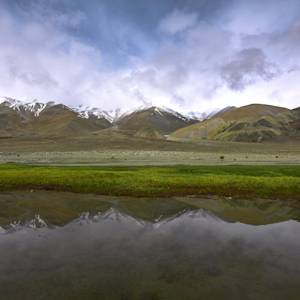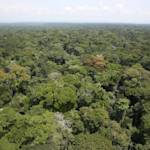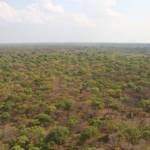Northeast Asian Deciduous Forest
2023 CE • Korea, China, Russia, and Japan
The Northeast Asia Deciduous bioregion is a diverse and ecologically significant area encompassing parts of China, Japan, Korea, and Russia, characterized by its rich deciduous forests and unique wildlife. "In one part of China it is known as the Northeast China Plain deciduous forest, and in another part of China near the plain it is known as the Manchurian mixed forest. The part located in Korea is also known as the Central Korean deciduous forest . . . Pine trees, spruce, oak, and ash trees grow in this biome as well as Manchurian elm, Manchurian walnut, Mongolian oak, and Daurian birch. Below these trees a valuable medicinal plant called the Asian ginseng grows, as well as the shrubs bush clover, hazel, Daurian buckthorn, hawthorn, and the thorny Daurian rose." The region is home to many threatened and endangered animal species including the red-crowned crane, red panda, sable, Sika deer, leopard, and Siberian tiger. "In recent decades heavy logging has extensively changed much of the forest. Timber harvesting, over-harvesting, and fires have also dramatically reduced the amount of Asian ginseng, which is rare, or extinct in most of eastern Asia. The Northeast China Plain is intensively farmed for wheat mainly, so very little traces of the original forest remain. Patches of forest can still be seen in some places where it has been protected for religious reasons, or where the land is steep and inaccessible."
Mariah H., "North Asian Deciduous Forest Biome," Blue Planet Biomes, 2003.
Image: Caitriana Nicholson from 北京 ~ Beijing, 中国 ~ China, CC BY-SA 2.0, via Wikimedia Commons


Learn about Maya Lin’s fifth and final memorial: a multi-platform science based artwork that presents an ecological history of our world - past, present, and future.

Discover ecological histories and stories of former abundance, loss, and recovery on the map of memory.

Learn how we can reduce our emissions and protect and restore species and habitats – around the world.

See how art can help us rethink the problems we face, and give us hope that each one of us can make a difference.

Help make a global memorial something personal and close to home. Share your stories of the natural world.


